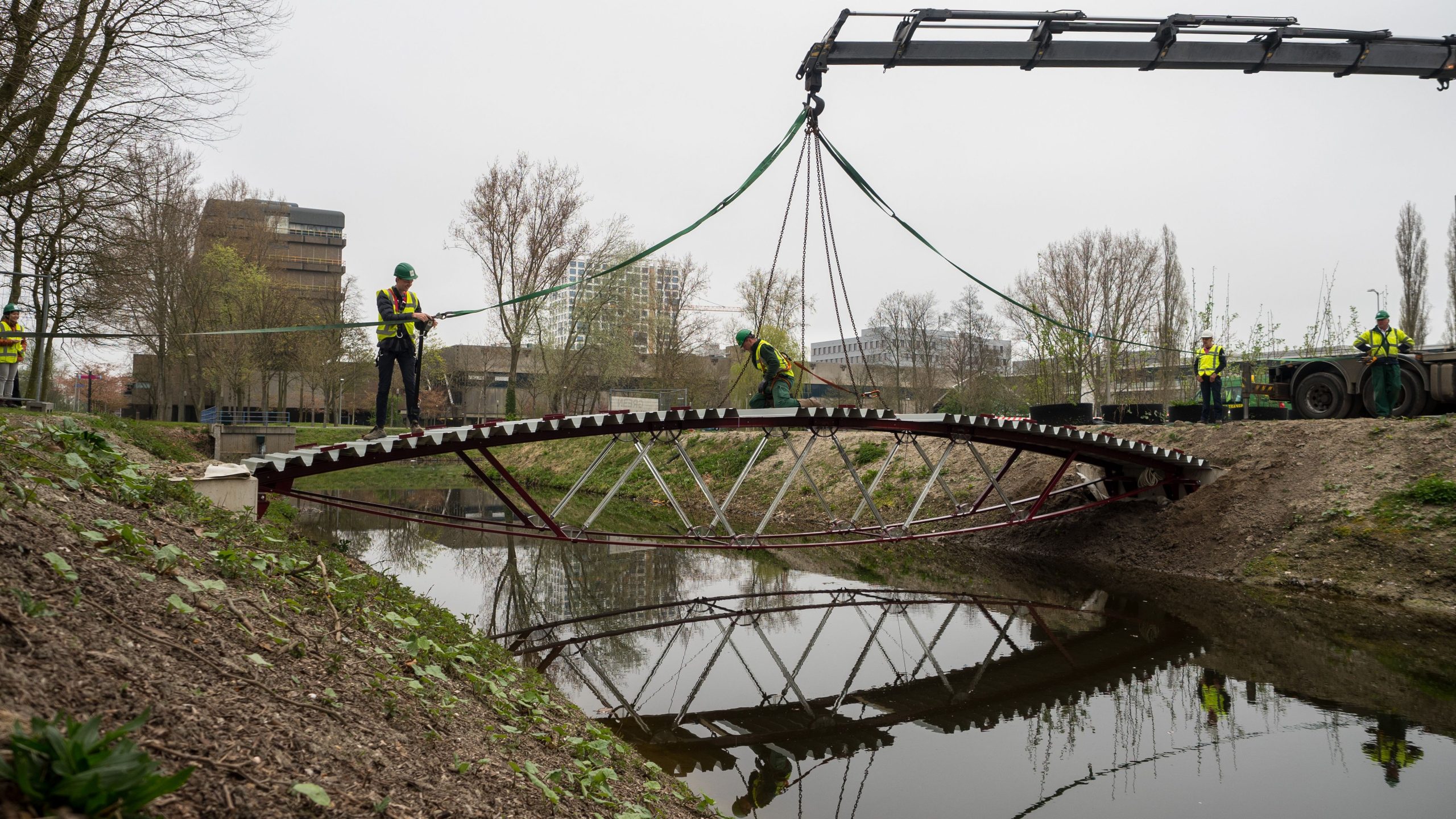A steel-and-glass truss was hoisted in place on Monday, April 3, 2017. Over time it will be transformed into a glass arch bridging the water between Mekelpark and Green Village.
The inspiration for a glass bridge came from the fantasy film Thor (2011). Hollywood characters Thor and Loki battled on a kilometre long glass bridge between Midgaard (Earth) and Walhalla (heavens). PhD candidates Ate Snijder and Joris Smits from the structural design chair of the Faculty of Architecture and Built Environment (BK) started to wonder if such a construction could even be possible. They found out that such a bridge would require solid diamond. No problem in films, but unpractical for a university campus.
Together with Professor Rob Nijsse of BK and the Faculty of Civil Engineering & Geosciences (CiTG), and others from the TU Delft Transparency Research Group, Snijder and Smits set out to design a glass bridge for the Green Village. The ‘Glass Masonry Bridge’ will be the world’s first bridge made entirely from glass, apart from the concrete abutments and steel cables for the railing.
As the Romans
“We’re building as the Romans did”, Smits said. He explained the need for a temporary arched formwork to support the stones during assembly. Once the arch is complete, the support structure is removed and the stones sink in, keeping each other in place with high compression forces.
Whereas the Romans used wooden structures for their bridge building, the scaffold for the futuristic glass bridge is a lens-shaped truss with steel strips and glass diagonals.
That support structure was hoisted into place last Monday. It will be temporarily covered with grass to make a green bridge to the Green Village. The grass bridge will be a temporary stand-in for the glass bridge.
2,000 glass bricks
In a later stage, Smits declined to set a date, the grass will be replaced with around 2,000 S-shaped glass bricks, made from recycled glass. The glass bricks will lock each other into place. The dry assembly method bypasses the need for glue and facilitates a second life elsewhere.
Not only will the final version of the ‘Glass Masonry Bridge’ be the world’s first full glass bridge, it will also be a showpiece for sustainability, as it is made from recycled glass and fully recoverable.
Read more



Comments are closed.